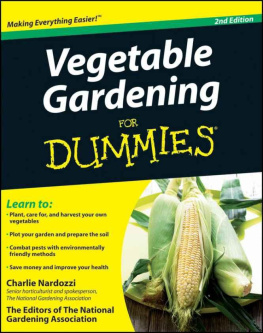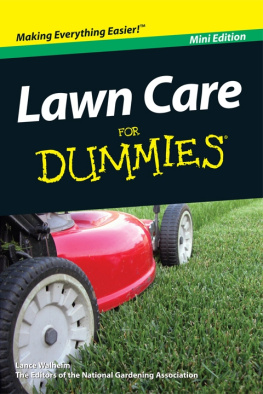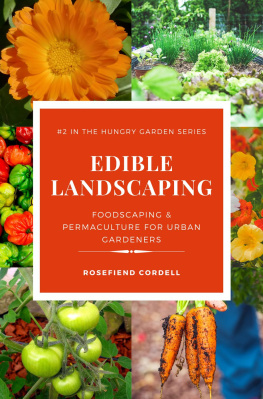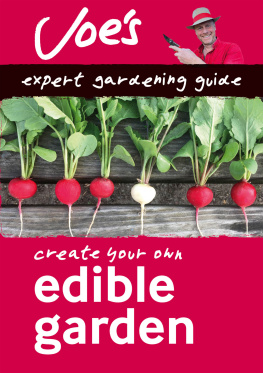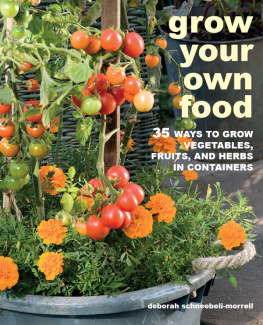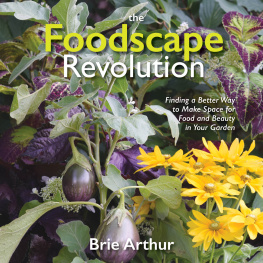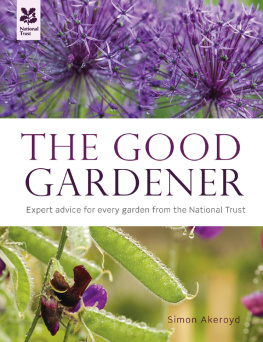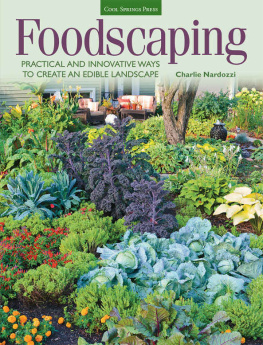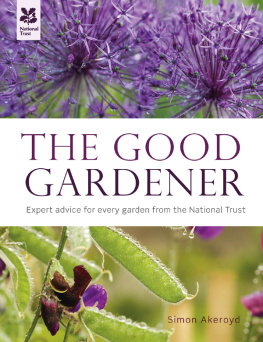First published in 2015 by Cool Springs Press, an imprint of Quarto Publishing Group USA Inc., 400 First Avenue North, Suite 400, Minneapolis, MN 55401 USA
2015 Quarto Publishing Group USA Inc.
Text 2015 Charlie Nardozzi
All rights reserved. With the exception of quoting brief passages for the purposes of review, no part of this publication may be reproduced without prior written permission from the Publisher.
The information in this book is true and complete to the best of our knowledge. All recommendations are made without any guarantee on the part of the author or Publisher, who also disclaims any liability incurred in connection with the use of this data or specific details.
Cool Springs Press titles are also available at discounts in bulk quantity for industrial or sales-promotional use. For details write to Special Sales Manager at Quarto Publishing Group USA Inc., 400 First Avenue North, Suite 400, Minneapolis, MN 55401 USA.
To find out more about our books, visit us online at www.coolspringspress.com.
Digital edition: 978-1-62788-632-1
Softcover edition: 978-1-59186-627-5
Library of Congress Cataloging-in-Publication Data
Nardozzi, Charlie, author.
Foodscaping : practical and innovative ways to create an edible landscape / Charlie Nardozzi.
pages cm
Other title: Practical and innovative ways to create an edible landscape
Includes index.
ISBN 978-1-59186-627-5 (sc)
1. Edible landscaping. 2. Plants, Edible. I. Title. II. Title: Practical and innovative ways to create an edible landscape.
SB475.9.E35N37 2015
634--dc23
2014044871
Acquisitions Editor: Billie Brownell
Design Manager: Brad Springer
Design and Layout: Rebecca Pagel
Cover photo: Shawna Coronado
Foodscaping
PRACTICAL AND INNOVATIVE WAYS TO CREATE AN EDIBLE LANDSCAPE
Charlie Nardozzi

Dedication
To my daughter, Elena, who grew up
grazing in a foodscape. May you
always love fresh fruits and veggies.
Acknowledgments
I thank all the edible landscapers who provided inspiration for this book. In particular, Id like to recognize Ros Creasy for being a trailblazer in the edible landscape movement and an inspiration for many years. A special thanks to Billie Brownell for suggesting and guiding this book along and to all the folks at Cool Springs Press and Quarto Publishing who had a hand in this books creation, including Tracy Stanley, for making sure everything in the book came together, and art director Brad Springer for this books great design. Last, I thank photographer Troy Marden, whose photos decorate many of these pages.
Contents
Introduction

T he popularity of growing your own food continues to be one of the main food trends of the twenty-first century. Young and old are realizing that growing their own vegetables, fruits, and herbs has many benefits beyond just having something tasty to eat. The edible gardening trend reaches into personal lives and communities to help create a culture of growing healthy, safe food; eating better; and creating more livable communities. That sounds like a tall order for a carrot or tomato, but youd be amazed what transformations happen when you start growing a garden. Combined with this trend is the need for having a beautiful, ecologically balanced, healthyyet functionalyard. We want our yards to fill so many needs. Yards need to be a playground, sports field, attractive showcase, and quiet oasis. Often the temptation is to segment the yard into areas with the edible garden relegated to the corner of a back yard. But thats all changing as gardeners realize that you can combine edibles with almost any planting in the yard and still have it look beautiful.
The foodscaping trend couldnt be coming at a better time. Its capitalizing on a great interest and enthusiasm for more food gardens. I see this over and over at talks I give around the country on edible gardening. There are always the tried-and-true older vegetable gardeners, but increasingly its another group whos showing up to talksyounger people who are eager to learn the nuances of food gardening. Theyre bringing with them increased interest in different ways to grow food in large gardens, small spaces, and even rooftops. One topic that always draws an interest from the crowd is edible landscaping or foodscaping.
You dont have to do a total yard makeover; its more of a touch up. Foodscaping is integrating edibles into your gardens without sacrificing beauty. Its a great way to produce food for yourself and your community and still have the beauty and functionality you want in the landscape.
Many modern edible landscapers are bold in their use of edibles in the front yard and replacing anything they cant eat with a food crop. Thats great, and if youre so motivated, go for it! But this book is also for those homeowners who want a milder approach.
The desire to grow more of our own food has spurred many gardeners to rip out lawns and create foodscapes that blend perennial flowers, annual flowers, vegetables, and herbs. These gardens are sprouting up not only around individual homes but in apartment complexes, too.
The Numbers Tell the Story
The National Gardening Association recently estimated more than forty-two million households in the United States are growing some of their own food. Thats one in three households in our country. Its a 17-percent increase since 2008, and the trend is continuing. What I find most significant and encouraging is that the millennial generation (ages eighteen to thirty-four) increased their participation in food gardening by 63 percent over the same time period.
This trend in more food gardeners is important, because its estimated by 2050 there will be nine billion people on the planet. To put that number in perspective, well have to grow more food in the next forty years than all of mankind has produced in the last 10,000 years combined. Thats a lot of food. Certainly big farms in the United States and other countries will continue to supply us with great food, but increasingly I feel well have to produce a portion of our food in our own yards. We have done this before, in the 1940s. The Victory Garden movement during World War II encouraged homeowners to grow their own vegetables, fruits, and herbs, and we responded by producing more than 40 percent of our produce in yards across the country.
Superfoods
Its not just about growing fresh food. Its also about growing food thats tasty and healthy for us. Certainly any fresh food harvested directly from your own garden is going to have a higher nutritional content than store-bought produce. But in a foodscape, you can really focus on those foods that make the biggest nutritional and health impact. The following table, Superfoods from Your Garden, highlights some of the great superfoods that you can grow in your foodscape that will be tasty and beautiful and packed with health-promoting vitamins, minerals, and compounds.
The health of our food depends on whats used to grow it. Many home gardeners start growing their own fruits, vegetables, and herbs out of concern for whats sprayed on commercial produce. By growing your own, youll know exactly what has been applied to those plants to get them to produce so wonderfully. Many gardeners have turned to organic gardening techniques to feel safer about the sprays and fertilizers they are using. Organic techniques emphasize building soil health, using natural fertilizers, and using organic pesticides and herbicides


